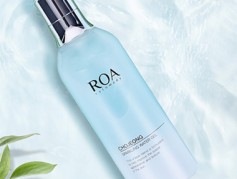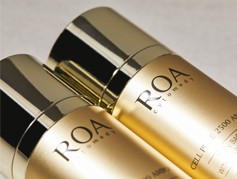
Wavy hair is a beautiful and versatile hair type that falls somewhere …
Kellie
2024-10-25 22:26
3
0
본문
3. Use Cool Water for Rinsing:
When washing your hair, use cool or lukewarm water to rinse out your shampoo and conditioner. Hot water can open the hair cuticle, allowing the color to escape more easily. Cool water helps seal the cuticle, locking in the color and leaving your hair looking shiny and vibrant.
7. Unravel the Twists:
Once your hair is fully dry, gently unravel each twist by twisting it in the opposite direction. Avoid separating the strands too aggressively to preserve the definition and prevent frizz. For added volume, you can fluff your roots with your fingers or a pick.
1. Use Color-Safe Products:
One of the most important steps in maintaining natural hair color is using color-safe products. Look for shampoos and conditioners specifically formulated for color-treated hair to prevent fading and maintain vibrancy. Avoid products containing sulfates, as they can strip the hair of color and moisture.
8. Style and Set:
To finish off your twist-out, you can style your hair as desired. You can leave your hair down for a more natural look, or create an updo or half-up style for a more polished appearance. To maintain the style and reduce frizz, you can use a lightweight hair oil or serum to add shine and smooth any flyaways.
Deep conditioning also provides added protection to natural hair, particularly when utilizing a protective deep conditioning treatment. These treatments not only moisturize and strengthen the hair but also form a protective barrier against environmental stressors, heat styling tools, and manipulation, helping to prevent further damage.
6. **Protective Styling Alternatives**: If you prefer not to braid or twist your hair, there are other protective styling options like wigs, weaves, or ponytails that can also help protect your natural hair while giving you versatility in your look.
1. **Moisture is Key**: One of the most common challenges for natural hair is dryness. To combat this, ensure you are using hydrating products such as leave-in conditioners and oils to keep your hair moisturized. When wearing protective styles, continue to moisturize your hair by using a spray bottle with water and a leave-in conditioner.
The frequency of deep conditioning natural hair can vary depending on your hair's needs and overall condition. As a general guideline, aim to deep condition your hair at least once a week for optimal hydration and repair. If your hair is particularly dry or damaged, consider deep conditioning more frequently, such as twice a week, until you notice an improvement in your hair's health.
4. **Hair Care Routine**: Develop a simple and consistent hair care routine that includes regular deep conditioning treatments and gentle detangling methods. Keep your scalp clean and healthy by cleansing with a sulfate-free shampoo or co-washing regularly.
5. Avoid Heat Styling:
Heat styling tools like flat irons and curling wands can damage the hair cuticle and lead to color fading. Limit the use of heat styling tools and use a heat protectant spray when necessary. Opt for air-drying your hair or using heat-free styling methods to maintain your natural hair color's health and vibrancy.
4. Protect Your Hair from UV Exposure:
Exposure to the sun's harmful UV rays can cause hair color to fade and become dull. To protect your natural hair color, wear a hat or use a UV-protectant spray when spending time outdoors. Also, consider using hair products containing SPF to shield your hair from sun damage.
5. Scalp Care: Healthy hair starts with a healthy scalp. Regular scalp exfoliation and massaging can improve blood circulation, promote hair growth, and help maintain a balanced environment for your wavy hair to thrive.
When selecting a deep conditioning treatment for natural hair, it's essential to consider your hair's specific needs. Look for products that are formulated with natural and nourishing ingredients such as shea butter, coconut oil, avocado oil, and honey. Avoid products that contain harsh chemicals like sulfates, parabens, and silicones, as these can strip the hair of its natural oils and cause further damage.
4. Protein Treatments: Wavy hair can benefit from protein treatments to strengthen the hair strands and improve elasticity. Look for protein-rich hair masks or treatments to help fortify your wavy hair and prevent breakage.
3. Diffusing: If you prefer to air dry your hair, consider using a diffuser attachment on your hair dryer. Diffusing helps to gently dry your waves without disturbing their natural pattern, resulting in bouncier and more defined waves.
By incorporating these radiant tips into your hair care routine, you can perfect the art of maintaining length with your natural hair. Remember, each person's hair journey is unique, so don't be discouraged if you encounter setbacks along the way. Stay committed to caring for your Hair porosity testing, and you'll soon be rewarded with strong, healthy, and luscious natural locks.
6. **Scalp Care**: A healthy scalp is essential for promoting hair growth. Keep your scalp clean by washing it regularly and incorporating scalp massages to stimulate blood flow and encourage hair growth.
When washing your hair, use cool or lukewarm water to rinse out your shampoo and conditioner. Hot water can open the hair cuticle, allowing the color to escape more easily. Cool water helps seal the cuticle, locking in the color and leaving your hair looking shiny and vibrant.
7. Unravel the Twists:
Once your hair is fully dry, gently unravel each twist by twisting it in the opposite direction. Avoid separating the strands too aggressively to preserve the definition and prevent frizz. For added volume, you can fluff your roots with your fingers or a pick.
1. Use Color-Safe Products:
One of the most important steps in maintaining natural hair color is using color-safe products. Look for shampoos and conditioners specifically formulated for color-treated hair to prevent fading and maintain vibrancy. Avoid products containing sulfates, as they can strip the hair of color and moisture.
8. Style and Set:
To finish off your twist-out, you can style your hair as desired. You can leave your hair down for a more natural look, or create an updo or half-up style for a more polished appearance. To maintain the style and reduce frizz, you can use a lightweight hair oil or serum to add shine and smooth any flyaways.
Deep conditioning also provides added protection to natural hair, particularly when utilizing a protective deep conditioning treatment. These treatments not only moisturize and strengthen the hair but also form a protective barrier against environmental stressors, heat styling tools, and manipulation, helping to prevent further damage.
6. **Protective Styling Alternatives**: If you prefer not to braid or twist your hair, there are other protective styling options like wigs, weaves, or ponytails that can also help protect your natural hair while giving you versatility in your look.
1. **Moisture is Key**: One of the most common challenges for natural hair is dryness. To combat this, ensure you are using hydrating products such as leave-in conditioners and oils to keep your hair moisturized. When wearing protective styles, continue to moisturize your hair by using a spray bottle with water and a leave-in conditioner.
The frequency of deep conditioning natural hair can vary depending on your hair's needs and overall condition. As a general guideline, aim to deep condition your hair at least once a week for optimal hydration and repair. If your hair is particularly dry or damaged, consider deep conditioning more frequently, such as twice a week, until you notice an improvement in your hair's health.
4. **Hair Care Routine**: Develop a simple and consistent hair care routine that includes regular deep conditioning treatments and gentle detangling methods. Keep your scalp clean and healthy by cleansing with a sulfate-free shampoo or co-washing regularly.
5. Avoid Heat Styling:
Heat styling tools like flat irons and curling wands can damage the hair cuticle and lead to color fading. Limit the use of heat styling tools and use a heat protectant spray when necessary. Opt for air-drying your hair or using heat-free styling methods to maintain your natural hair color's health and vibrancy.
4. Protect Your Hair from UV Exposure:
Exposure to the sun's harmful UV rays can cause hair color to fade and become dull. To protect your natural hair color, wear a hat or use a UV-protectant spray when spending time outdoors. Also, consider using hair products containing SPF to shield your hair from sun damage.
5. Scalp Care: Healthy hair starts with a healthy scalp. Regular scalp exfoliation and massaging can improve blood circulation, promote hair growth, and help maintain a balanced environment for your wavy hair to thrive.
When selecting a deep conditioning treatment for natural hair, it's essential to consider your hair's specific needs. Look for products that are formulated with natural and nourishing ingredients such as shea butter, coconut oil, avocado oil, and honey. Avoid products that contain harsh chemicals like sulfates, parabens, and silicones, as these can strip the hair of its natural oils and cause further damage.
4. Protein Treatments: Wavy hair can benefit from protein treatments to strengthen the hair strands and improve elasticity. Look for protein-rich hair masks or treatments to help fortify your wavy hair and prevent breakage.
3. Diffusing: If you prefer to air dry your hair, consider using a diffuser attachment on your hair dryer. Diffusing helps to gently dry your waves without disturbing their natural pattern, resulting in bouncier and more defined waves.
By incorporating these radiant tips into your hair care routine, you can perfect the art of maintaining length with your natural hair. Remember, each person's hair journey is unique, so don't be discouraged if you encounter setbacks along the way. Stay committed to caring for your Hair porosity testing, and you'll soon be rewarded with strong, healthy, and luscious natural locks.
6. **Scalp Care**: A healthy scalp is essential for promoting hair growth. Keep your scalp clean by washing it regularly and incorporating scalp massages to stimulate blood flow and encourage hair growth.


